Like this article?
Go on, give it a kudu!

Published on January 03 2019
Written by:
yourafricansafari.com
1855 views
It’s easy to get drawn into the safari scene—the mixture of wild and open spaces, excitement and the element of danger when viewing wildlife in their natural safari environment. But, when we go on safari, we must shape our behavior on the fact that we’re visiting our wildlife friends on their home turf. There are a few guidelines to take as house rules with you to the wild! It is unfortunate that incidences do happen—often at the interface between man and beast. Chances are if we stick to these house rules and respect the wild environment, we will be safe on safari.
Even in quiet areas where you may feel the urge for a quick escape from the vehicle, never step out of this safety zone. As safari visitors, we like following and sometimes even stalking wildlife, but we mostly lack the trained eye and ear to know when danger is lurking in the bushes.
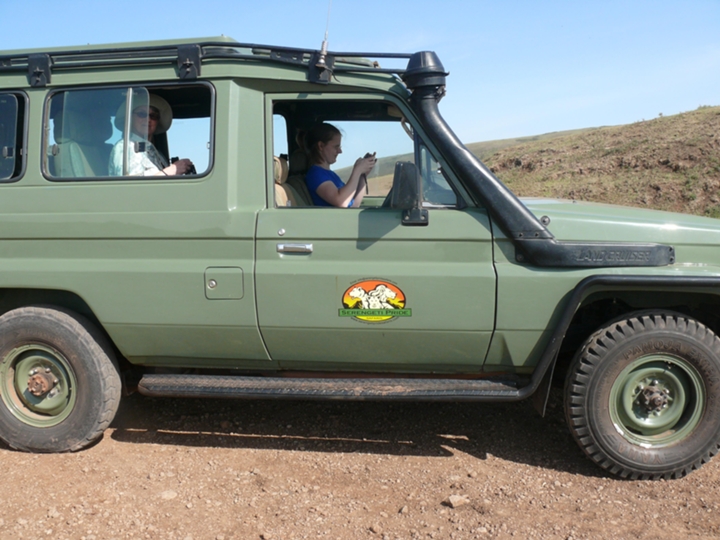
And this is the exact reason why keeping to the safety zone—whether a self-drive, safari or so-called game viewing vehicle—is the house rule for staying out of harm’s way with African wildlife. The benefit is that wildlife hardly associate the safari vehicle with food or prey. It’s their turf and they know where to hunt, vehicles passing through are rather a curious thing, and they act accordingly with either interest or flight.
Not only is safari wildlife used to open-topped safari vehicles and its typical soothing dark green and brown colors, but there is the added advantage of the experienced safari vehicle driver.
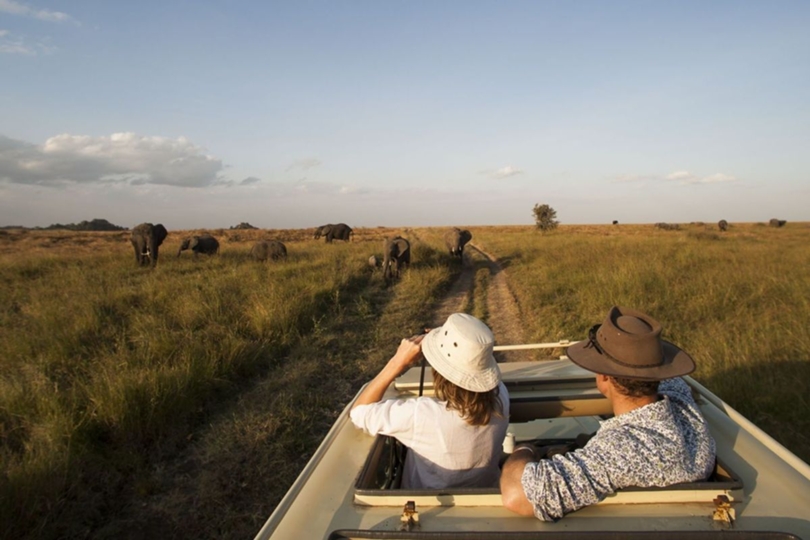
Although open-topped safari vehicles are generally safe, we still need to behave responsibly. No waving, sudden standing up, throwing of stuff or loud voices—these remain foreign to wildlife and they are inclined to react to any such perceived threats. Not only that, but these actions are annoying to everyone else in your vehicle. Follow the safari guide’s instructions and enjoy the magnificent benefits that come with an open-topped safari vehicle and it will be a safari experience to tell everyone about.
The other key safety zone is the game hide. Most hides have plenty of wildlife information and safety rules.
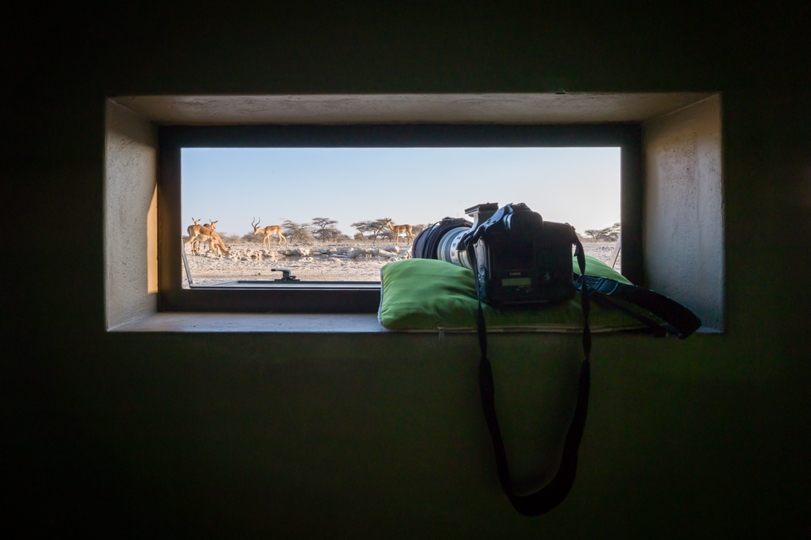
These are critical pieces of information. Often from local knowledge and safari know-how, it is worthwhile to spend a few minutes going over the information supplied at the typical hide. Hides are also safety zones in their own right. They are typically designed to be a physical barrier between man and wildlife and a safe place to hide-out and stalk your favourite safari beast or bird!
Whether it may be your first or umpteenth encounter with an adult elephant, they remain powerful giants that can easily instil fear with their size and sense of power. When approaching on safari, the secret is to beware of your own actions, which can trigger defense, irritation or aggression in the animal. Lost in the moment, it’s easy to try and get the animals attention—perhaps for a better photo angle.
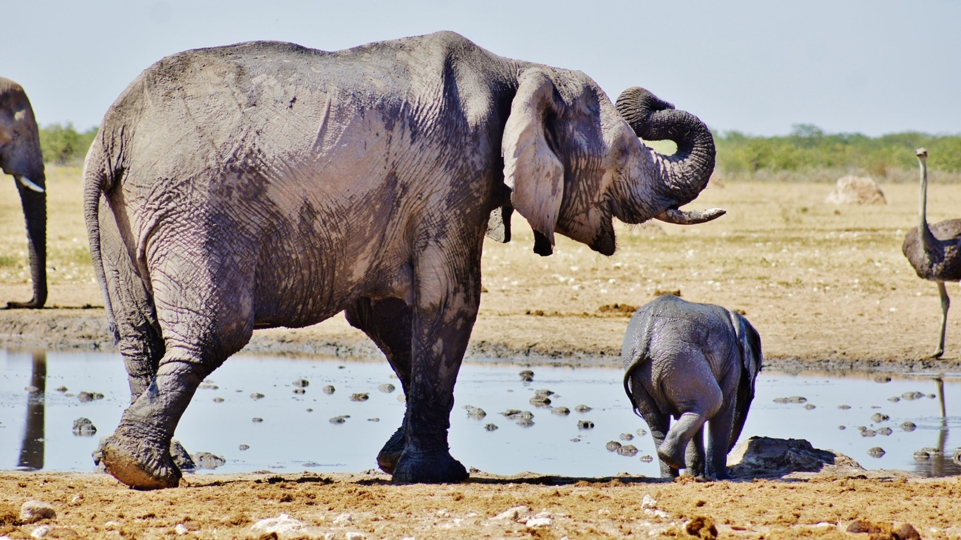
Remember that we’re in their space, stick to the rule of staying quiet, discreet and respectful of the animal’s space, and you will likely not experience the fear of an adult elephant aiming right for you.
When wildlife approach, move fluidly. Any jerking movements or sudden jolts of cameras can startle the animal. Fluid and slow movements will put everyone at ease, and you’ll still be able to capture that once in a lifetime memory.
As much as we all understand that need for evidence of that must-experience safari moment: the giant elephant matriarch arms’ length away, or the fierce lion looking straight into your camera lens, regardless, never risk your, or their, safety for the ultimate safari selfie. Stay focused on the animals, their movements and act slowly and carefully in harmony with wildlife.
Always remember that wildlife such as lions in lion parks have had extra exposure and orientation when it comes to humans and they therefore tend to associate humans and vehicles with food. Game reserves and safaris in large national parks are as wild as its gets. These animals are never hand-raised or accustomed to humans at a young age, whereas for example, lions in lion parks may have been raised in captivity. All wild animals should be treated with utmost respect and with consideration for human safety. You’ll easily spot the difference in animal behavior between lions from lion parks and the large national reserves, but never feel too at ease knowing that cubs might have been raised in captivity with human exposure—although they may not be entirely wild, they remain wild and free at heart.
Have you seen a safari go wrong, an African predator attacking a vehicle or, even worse, a tourist and hence social media gone viral, leaving you with anxiety ahead of your upcoming safari? Viral messages are exactly that—it is not a guarantee of the real incidence or perhaps the irresponsible human behavior such as pushing an animals’ boundaries that contributed to the incident. To the trained and experienced safari guide, wildlife and their behavior are largely understood and predictable. Your best safety tip is thus to work with your safari guide. They will read an animal’s mood and can easily navigate for safety.
As tourists, we only need a few key safari safety tips to understand how wild the African safari can be—and that is exactly what we want to experience when on safari. Stay safe with the tips provided and always respect Africa and its wildlife. You’ll be sure to want to return for another unforgettable safari experience.
Has been on: 15 safaris
Your African Safari (YAS) is a safari-planning resource for anyone planning an African safari. It features information on over 2600 tour operators including company and vehicle descriptions, user reviews, safari itineraries and photos. It also features detailed information on 14 countries and 84 parks and game reserves.
© Your African Safari Ltd, All rights reserved.
Your African Safari is a safari-planning and safari review site. It was created to help support a healthy African wildlife population. All reviews are vetted before being approved and only ethical tours are published
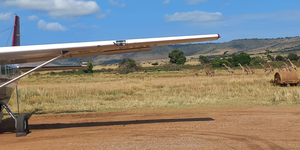
Using charter flights on your next safari
Published on December 22 2025
By: yourafricansafari.com
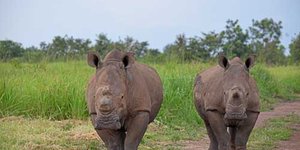
Garamba National Park—an anchor of hope in the Democratic Republic of Congo
Published on January 09 2025
By: R.W.

Namibia imposes new visa requirements
Published on July 25 2024
By: yourafricansafari.com